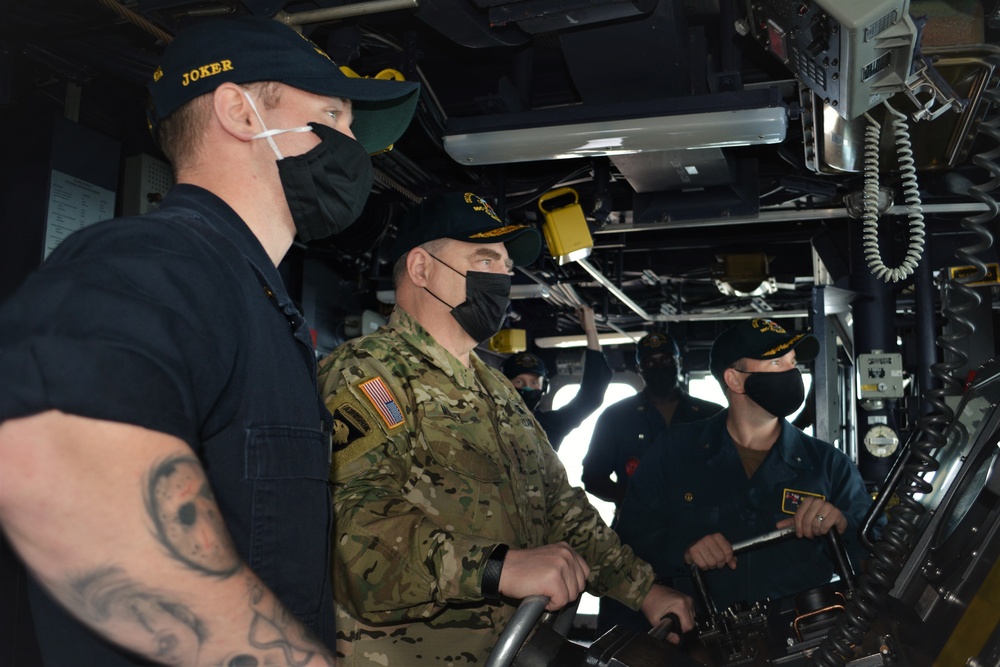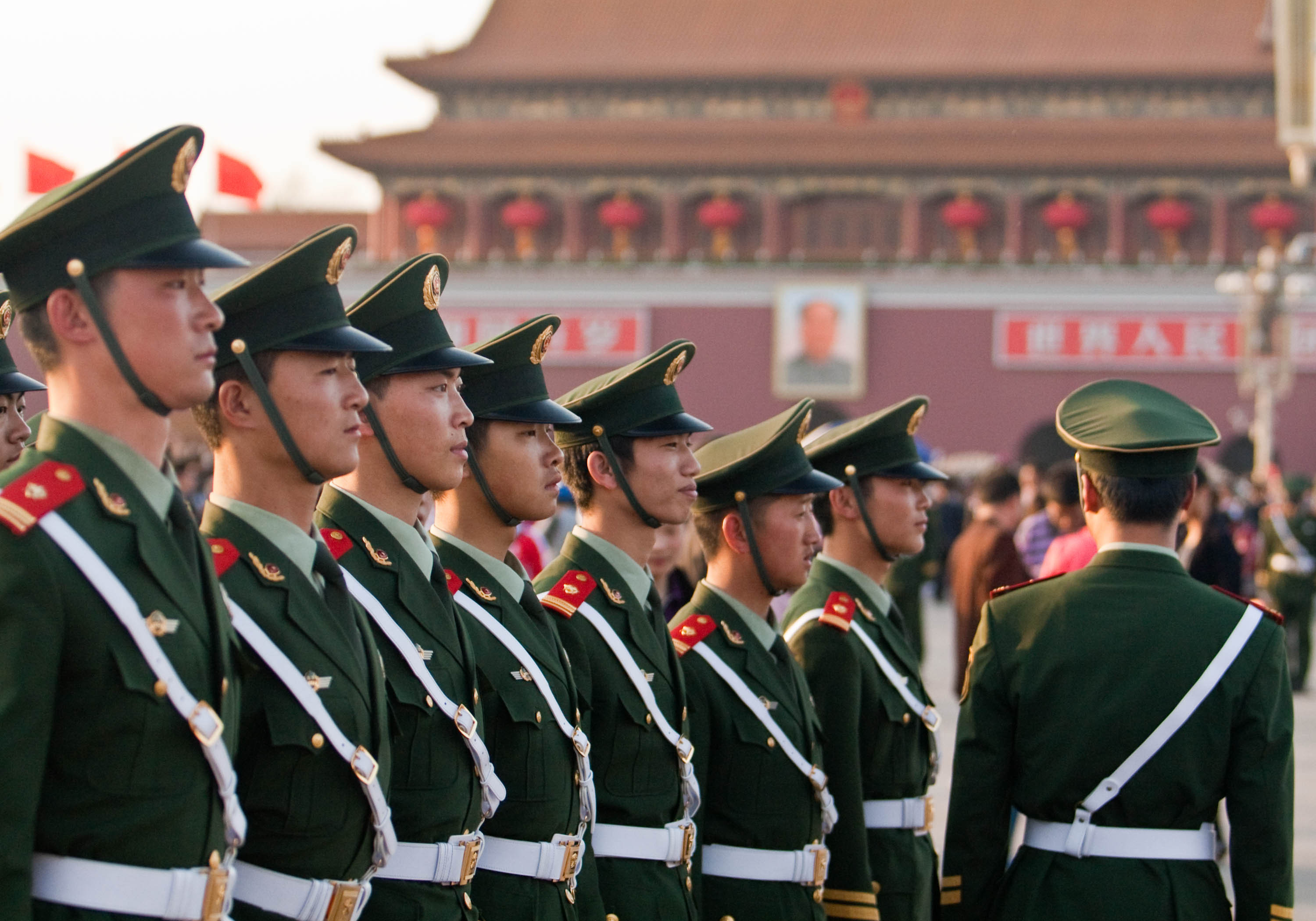Assessing China’s nuclear expansion

Source:Shutterstock
The Pentagon expects China to expand its current nuclear arsenal of 350 warheads to over 1,000 by 2030. What are the core motives behind China's nuclear expansion and its impact?
Views
Assessing China’s nuclear expansion
By Grace Faerberweb only
( Have you read? Why the Chinese Military Has Increased Activity Near Taiwan )
The U.S. Department of Defense’s Report on Military and Security Developments Involving the People’s Republic of China released on November 3rd warned, over the next 10 years, China intends to promote the modernization, diversification and expansion of its nuclear power. The Pentagon expects China to expand its current nuclear arsenal of 350 warheads to 700 deliverable nuclear warheads by 2027 and over 1,000 by 2030.
Even with the acceleration, Beijing is still well behind the United States, with its nuclear stockpile of 5,550 warheads, and Russia, with 6,255. Yet, this disparity should not dismiss the issue at hand – the core motivation behind China’s nuclear expansion and its implications.
China’s expanding nuclear arsenal and military modernization should be assessed through the lens of President Xi Jinping’s goals to expand China’s regional and global power in order to realize “the great rejuvenation of the Chinese nation.”
China’s regional and global power ambitions
General Milley called China the “No. 1” nation-state military challenger to the United States, saying China is “clearly challenging us regionally, and their aspiration is to challenge us globally.” He added, “they have a China dream, and they want to challenge the so-called liberal rules-based order.” The Pentagon’s report stated that by 2027, China aims to develop the capabilities to counter the U.S. military in the Indo-Pacific region. U.S. Admiral Charles Richard warns China is on a trajectory to become a strategic peer to the United States in military might by the end of the decade.
 Army Gen. Mark A. Milley, chairman of the Joint Chiefs of Staff, drives the Arleigh Burke-class destroyer USS Michael Murphy (DDG 112) during a visit to the ship in the Pacific Ocean, March 4, 2021. Operations Specialist 2nd Class Jeremy Richey, left, a native of Elkhart, Texas, oversees the evolution as a master helmsman. During the visit, Milley toured the destroyer and visited with sailors. ( Source: U.S. Department of Defense )
Army Gen. Mark A. Milley, chairman of the Joint Chiefs of Staff, drives the Arleigh Burke-class destroyer USS Michael Murphy (DDG 112) during a visit to the ship in the Pacific Ocean, March 4, 2021. Operations Specialist 2nd Class Jeremy Richey, left, a native of Elkhart, Texas, oversees the evolution as a master helmsman. During the visit, Milley toured the destroyer and visited with sailors. ( Source: U.S. Department of Defense )
China’s core motivations can be explained in two-fold: quests for regional and global expansion, both tied to the ultimate goal of “the great rejuvenation of the Chinese nation.” Also known as the “Chinese Dream” doctrine, Xi’s goal of rejuvenation calls for the country to reclaim its natural political and cultural importance and retake its rightful place in the world order. In China’s 5,000 year history, Xi points to China’s greatest period as the Qing Empire; after which, he says the country has been struggling for great renewal. In order for China to be “rejuvenated” to its greatest status, it must reclaim its place as a regional and global power.
For China to dominate the Asia-Pacific region it needs to demonstrate its position as the greatest regional military power. To succeed in a regional conflict, China must dissuade the United States and other great powers from intervening by using the threat of escalation. Within the greater Asia-Pacific, China is expanding its military capabilities and nuclear arsenal to serve as a tool to win a regional conflict and create a credible threat of escalation that makes intervening impossibly dangerous and costly to the United States and other powers.
Beyond regional expansion, President Xi’s goal of “great rejuvenation” also calls for global influence.
China aims to establish its primacy in the Asia-Pacific region concurrently with leadership over the international order; if successful, China will surpass the United States to become the paramount regional power and the leading global power.
Xi in 2012 conditioned the success of the “Chinese dream” on becoming a global maritime power. This would enable China to secure its Qing dynasty-level influence, expanding its maritime claims to key trade routes and supply lines.
CCP leaders believe that the PRC’s global activities, including the PLA’s growing global presence, are necessary to create an international environment conducive to China’s national rejuvenation. In 2017, Xi Jinping laid out two PLA modernization goals during his speech to the 19th Party Congress: to “basically complete” PLA modernization by 2035 and to transform the PLA into a “world class” military by 2049.
China’s strategy and warnings to the United States
China’s defense strategy in its regional and global power pursuits is to constrain the U.S.’ interference by building a competitive and in some areas superior Chinese military that renders the risks of military conflict intolerable to the United States. From the Pentagon report it is clear China is quickly expanding its nuclear arsenal in order to compete with that of the United States and, in military modernization, is already the U.S.’s top challenger, on a trajectory to become a strategic peer to the United States in military might by the end of the decade.
 ( Source: Shutterstock )
( Source: Shutterstock )
China’s nuclear warhead expansion, along with investments in more sophisticated and less vulnerable delivery systems, poses a shift from the country’s long-held “No First Use” nuclear doctrine. US officials warn China may be on the verge of acquiring a first-strike capability, a departure from its traditional posture of “minimum deterrence.” U.S. STRATCOM Commander Charles Richard told the Senate Armed Services Committee that China is moving a number of its ICBM’s to a “launch-on-warning” posture, bringing into question China’s “No First Use” policy.
Adding to concerns over the buildup, China has not been willing to negotiate - Beijing has long refused to join arms control talks and shown little interest in hotlines and other risk-reduction mechanisms. When President Xi met with Biden for the first time during Biden’s tenure as president On Nov. 16, the two leaders reportedly discussed the need for nuclear “strategic stability” talks. The plans for talks on nuclear de-escalation are significant, but plans have not been formalized; the U.S. is looking to see if China will follow through on its pledge.
 ( Source: Getty Images )
( Source: Getty Images )
But the U.S. – and for that matter the globe – cannot afford to wait on China to take the initiative to reduce tensions. As President Biden stressed in their virtual meeting, the two countries must create “guardrails” to prevent competition from veering into conflict. Yet, it is clear that China is actively preparing for conflict as a necessary evil in heightening its regional and global power. President Xi himself threatened conflict in the Taiwan Strait during the meeting, warning China will have “no choice but to take decisive measures” if provoked, coerced, or if “Taiwan independence separatist forces” “cross the red line.”
Xi points to securing national sovereignty and territorial integrity as China’s core interests; among which, the “peaceful reunification of the motherland” and opposition of “Taiwan independence” separatist forces are vital to achieving the great rejuvenation of the Chinese nation. Taiwan’s Defense Ministry projects the PLA will have the capacity to launch a full-fledged attack on Taiwan with minimal losses by 2025. The Pentagon’s report cites a series of scenarios for use of force against Taiwan.
At the centennial celebration of the founding of the CCP on July 1, Xi stated, “No one should underestimate the strong determination, firm will, and powerful capability of the Chinese people to defend their national sovereignty and territorial integrity.” China will soon match the U.S.’s military might and is quickly working toward the nuclear arsenal needed to make it a global superpower. The Biden administration needs to heed Xi’s warning and not underestimate China’s will and capability to realize its “great rejuvenation.” Although the virtual summit was an admirable first step to engage China, much more must be done, and the U.S. cannot wait on China to make the first move.
(This piece reflects the author's opinion, and does not represent the opinion of CommonWealth Magazine.)
About the author:
Grace Faerber (馮思思)
Grace Faerber is a Junior Researcher at Taiwan NextGen Foundation, a second-year Master's student at the Hopkins-Nanjing Center, and a Boren Fellowship awardee studying political science at National Taiwan University.
Her LinkedIn can be found at http://linkedin.com/in/gracefaerber
Have you read?
♦ What does the Biden-Xi meeting portend for Taiwan?
♦ Why the Chinese Military Has Increased Activity Near Taiwan
♦ The Evergrande crisis and China’s changing economy
Uploaded by Penny Chiang







